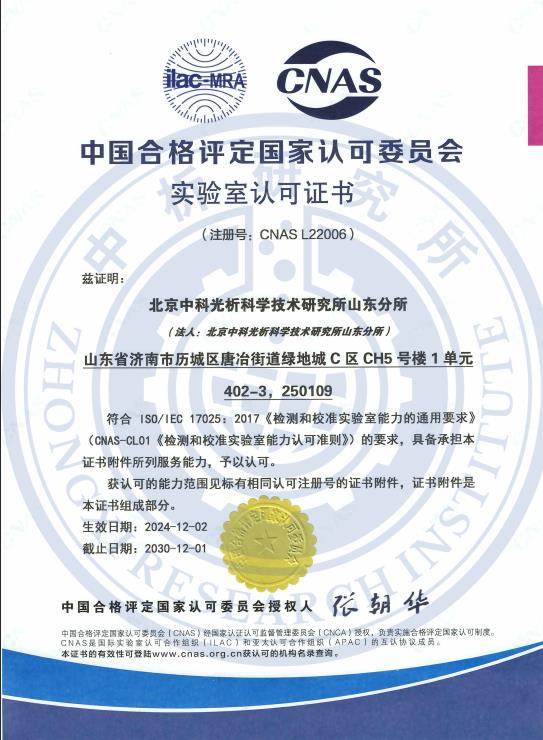感官指标(粉体、香气、色泽)检测
1对1客服专属服务,免费制定检测方案,15分钟极速响应
发布时间:2025-07-17 22:12:17 更新时间:2025-07-16 22:12:17
点击:0
作者:中科光析科学技术研究所检测中心
1对1客服专属服务,免费制定检测方案,15分钟极速响应
发布时间:2025-07-17 22:12:17 更新时间:2025-07-16 22:12:17
点击:0
作者:中科光析科学技术研究所检测中心
Sensory indicators detection, encompassing aspects such as powder characteristics, aroma, and color, plays a pivotal role in ensuring product quality, safety, and consumer satisfaction across industries like food, cosmetics, pharmaceuticals, and agriculture. These indicators evaluate subjective human perceptions that cannot be fully quantified by mechanical tests alone, directly impacting user experience and market acceptance. For instance, in the food industry, the appearance of a powder (e.g., flour or spices) can influence ease of use and shelf life, while aroma and color are critical for flavor appeal and authenticity. Similarly, in cosmetics, the sensory attributes of powders (like foundation) determine ure and spreadability, with aroma and color affecting brand identity and consumer trust. Detecting these indicators helps identify defects, ensure consistency, and comply with regulatory requirements, ultimately preventing recalls and enhancing competitiveness. The importance of sensory analysis has grown with global supply chains, where standardized testing methods mitigate risks of contamination or adulteration, making it an indispensable part of quality control processes worldwide.
Sensory indicators detection focuses on specific items divided into three core categories: powder characteristics, aroma, and color. For powder characteristics, key items include particle size distribution, flowability, moisture content, and the presence of impurities or foreign materials. In aroma detection, items involve intensity, purity (absence of off-odors), complexity, and persistence of scents. Color detection items cover hue, saturation, brightness, uniformity, and gloss. These items are evaluated through a combination of qualitative and quantitative approaches to ensure products meet predefined sensory thresholds. For example, in powder testing, a high moisture level might indicate spoilage risk, while in color analysis, deviations could signal oxidation or ingredient degradation. Robust detection of these items forms the foundation for identifying potential issues early in the production cycle.
Specialized instruments are employed to measure sensory indicators accurately and objectively. For powder characteristics, instruments include sieve analyzers for particle size distribution, flow testers (e.g., Hall flowmeter) for flowability, moisture analyzers for water content, and microscopy equipment for visual inspection of impurities. Aroma detection utilizes gas chromatographs (GC) to identify volatile compounds, olfactometers for controlled scent delivery, and electronic noses that mimic human olfactory responses. Color instruments feature spectrophotometers for precise hue and saturation measurements, colorimeters for quick color comparisons, and gloss meters to quantify surface shine. These tools enhance repeatability and reduce human error, with advanced options like laser diffraction analyzers for fine powders or hyperspectral imaging for detailed color mapping. Proper calibration and maintenance of instruments are critical to ensure reliable data across diverse product types.
Detection methods for sensory indicators blend instrumental and sensory panel approaches to achieve comprehensive results. For powder characteristics, methods include mechanical sieving according to standard protocols, rheological tests for flow properties, and gravimetric analysis for moisture. Aroma detection methods involve both instrumental analysis (e.g., GC-mass spectrometry for compound identification) and sensory evaluation by trained panels, using techniques like triangle tests to distinguish subtle differences or descriptive analysis to rate intensity. Color detection relies on instrumental methods such as reflectance spectroscopy for objective color values and visual comparisons against standard charts (e.g., Munsell or Pantone systems). Specific protocols, like the Static Headspace method for aroma extraction or the ISO 13320 method for laser diffraction in powders, ensure consistency. Methods often incorporate environmental controls, such as controlled lighting for color tests, to minimize external influences.
Detection standards provide frameworks for consistent and reliable sensory evaluations, often established by international and industry bodies. Key standards include ISO (International Organization for Standardization) guidelines, such as ISO 6658 for general sensory analysis methodology, ISO 13320 for particle size measurement via laser diffraction, and ISO 9231 for aroma testing in milk powder. For color detection, ASTM (American Society for Testing and Materials) standards like ASTM E313 for colorimetry and CIE (Commission Internationale de l'Éclairage) recommendations ensure global harmonization. National standards, such as GB/T in China (e.g., GB/T 5009.124 for food color additives) or FDA regulations in the US, add compliance layers. Industry-specific standards, like those from IFRA for cosmetics aroma, emphasize safety thresholds. Adherence to these standards guarantees that detection results are comparable, traceable, and legally defensible, facilitating trade and quality assurance.

证书编号:241520345370

证书编号:CNAS L22006

证书编号:ISO9001-2024001















版权所有:北京中科光析科学技术研究所京ICP备15067471号-33免责声明